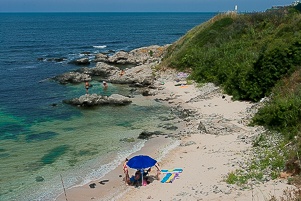
Sozopol – the city of salvation from the monotony
Sozopol is the oldest city on the Bulgarian Black Sea Coast. It has a unique architectural appearance, and there are many historical sites on its territory that worth a visit. Besides cultural tourism, the town offers excellent opportunities for sea holidays, sports and entertainment as there are beautiful beaches here. Around the city, there are also natural attractions that you could explore. Annually, at the end of each summer, the Apolonia Arts Festival takes place here, which is, of course, an additional entertainment for tourists – music, theatre, cinema, ballet, architecture, plastic arts. Sozopol is suitable for both stay with family and summer active nightlife – many discos and nightclubs are capable of satisfying all musical desires.
The best things to do in Sozopol – map, beaches, landmarks
USEFUL: For planning your visit to the place or accommodation in the nearby settlements, can use the collection of assistive tools – Google Road Map with calculator in km, flights to Bulgaria, rental cars, weather forecast, hotel search, timetables of buses in the region, see this link.
The town is 35 km south of Bourgas, 18 km north of Primorsko. There are regular buses to the neighbouring resorts as well as a bus to the capital of Bulgaria – Sofia. Sozopol, besides, offers a wide selection of accommodation – hotels, guest houses, small family hotels, lodgings, villas, bungalows.
There are many restaurants, fast food pavilion, taverns, bistros, pizzerias, bars, and pubs to satisfy every taste. Also, there are old-time looking restaurants that imitate the traditional fisher’s pub one hundred years ago. In them, you can eat fresh black sea fish and seafood prepared according to traditional Sozopol recipes.
Besides, another enjoyment for the tourists could be the aqua park and the Castle along the village of Ravadinovo. Although the Castle has nothing authentic and related to the culture of the ancient Sozopol, it is a tourist attraction, because of its architectural grace and beautiful garden with an artificial lake.
1) Central beach
It is located in the city centre near the park on the sea. Indeed, the sand strip is a connection between the old and the new part of Sozopol. The beach is into a bay with name Kampiffes ( from greek – twisting). On the left of the beach is Cape Skamnia , where it is the Old part of the town. On the right of the beach is Harmani Cape, where it is the new part of the city. As charming as it is, however, the beach is only 500 m long, about 30 m wide, and is often difficult in the summer to find a place for your towel.
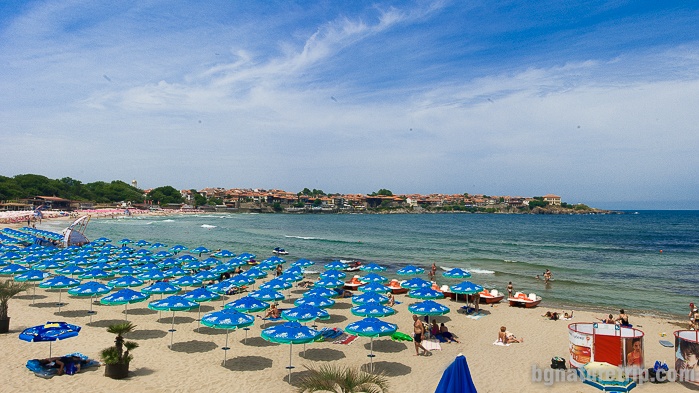
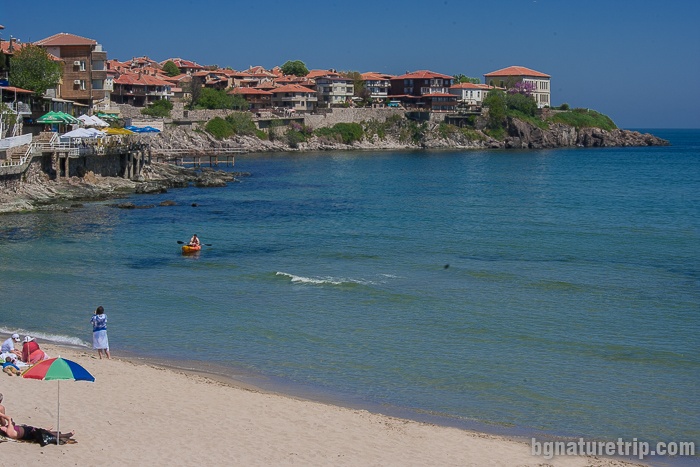
2) Harmani beach
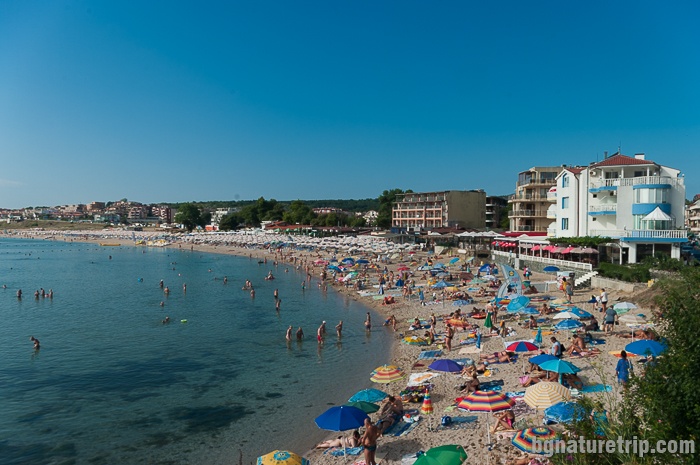
It located between Cape Harmani and the Budjaka Peninsula.
Behind the beach, there is a new neighbourhood that belongs to the town of Sozopol. The same name – Harmani calls it. The beach is long and spacious with fine, golden sand. Its length is 1.2 km, and its maximum width is 100m. Sunbeds and umbrellas are available, as well as water attractions – water skiing, jet skiing, and more. Also, the water here is rated as clean. Therefore the beach has a “Blue flag” (an award from the Foundation for Environmental Education – FEE). In addition, there are many restaurants and bars behind the beach.
Origin of the name “Harmani”
As a matter of fact, the name comes from Turkish and means “threshing wheat” – the separation of the grain from excess ingredients. In the past, before the advent of automated machines, people did it by hand, pouring the grain down in the windy weather. It was happening, while the wind was blowing the chaff, but only the grain remained. Cape Harmani was very suitable for this purpose because it always had a breeze in the harvest month – June. The farmers of Sozopol had barns located on it; therefore, they moved to live there with their families for the whole summer.

2) The Paradise Bay
In case you continue to Budjaka further south, before the camping Kavatsi, you will pass by another famous place – the Paradise Bay. Indeed, it is a bay with a shape like a fjord with steep green slopes. There are a fishing pier and boats into the gulf.

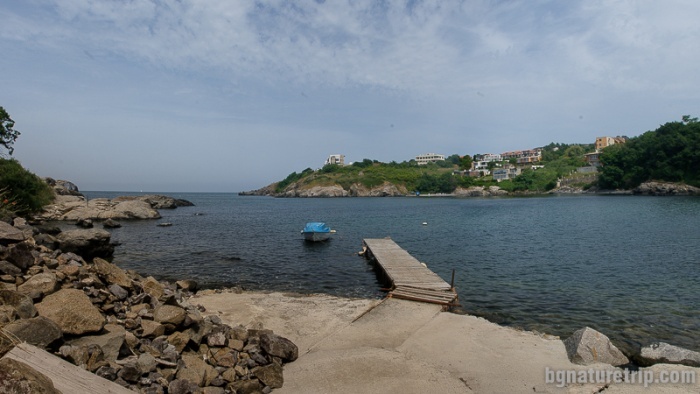
Offers for hotels in Sozopol
Booking.com
3) Kavatsi and Smokinya camping sites
They are south of Harmani Beach, between Budjaka Peninsula and Agalina Cape. Both of them belong to the same beach curve with a total length of 2 km and a width of 100 m. At present, they do not meet the common understanding of camping, because there are too many massive structures around. However, caravans, tents and wooden bungalows are available here for rent. For those looking for hotel room amenities, there are also hotel complexes

Once, in July, we saw here many bloomed flowers of the rare sand lily species (pancratium maritimum). It is a rare species according to the law in Bulgaria, and it is forbidden to tear.
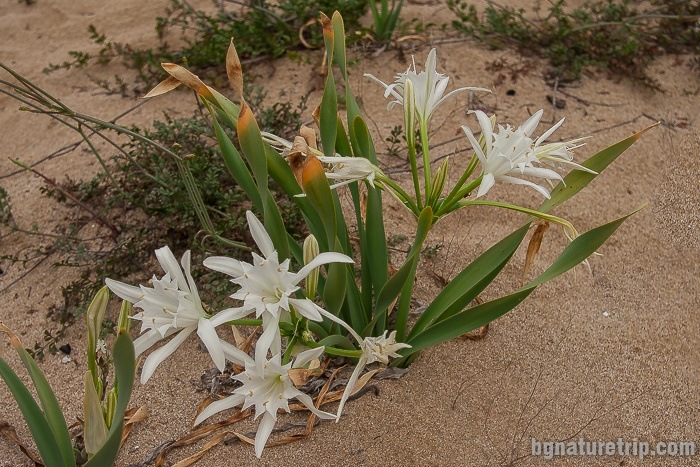
At the end of the beach, in the south direction, there is Cape Agalina – declared a protected area. There is a strange crack in the high rocks – similarly a fjord. Therefore the daredevils use this place to jump from a height into the sea.
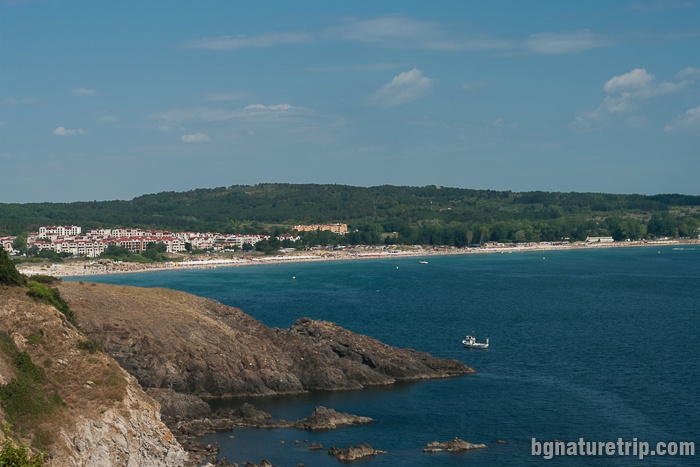
4) “Gradina,” “Tsarski plaj,” and “Zlatna ribka” camping sites
They belong to the same beach curve between the towns Sozopol and Chernomorets. “Gradina” is near Chernomorets, and “Zlatna ribka” is near Sozopol. The whole beach is 4 km long and 100 m wide. The windsurfing fans also enjoy the place, as there is a surf school here. Food and drink are available to buy from the many beach restaurants. Umbrellas and deck chairs are available for rent.
Similar to the Kavatsi camping, they do not meet the common understanding of camping, because there are too many massive structures around. However, in the area behind the beach, there are tents, caravans, wooden bungalows for rent. For those looking for the facilities in hotels, there are also vacation complexes.
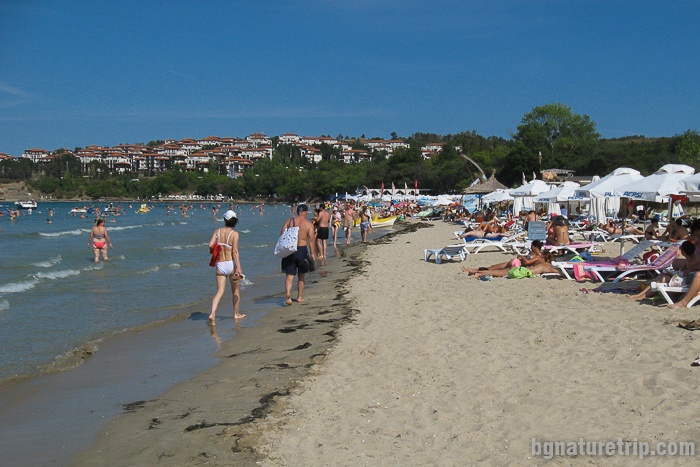
5) A wild beach in Alepu area, also known as “Chauffeurs’ Beach” or “Dunes.”
It is located near Duni Resort, about 10 km south of the centre of Sozopol. It is one of the most famous wild beaches on the Bulgarian Black Sea. Spacious, long and not crowded at all, it attracts seafarers, nudists and dog owners who can swim with them here. Its length is about 3 km, and its width is around 70 m. See this link for more information and photos.
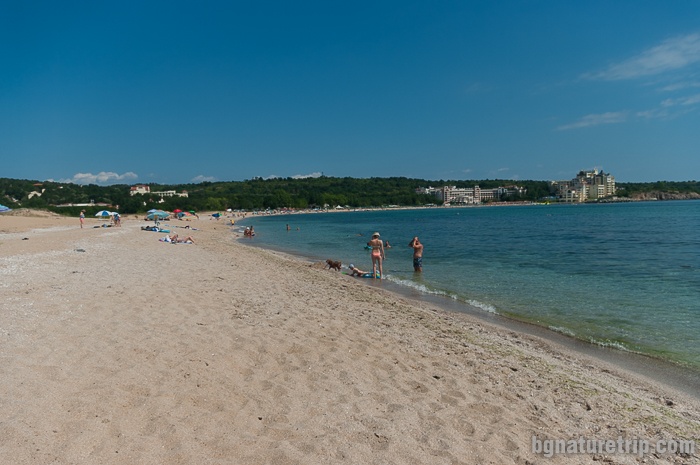
Sozopol islands
1) Island “Saints Cyricus and Julitta”
In the present, the island has been already in connection to the land of Sozopol through an artificial breakwater. It was built in 1927, and since then, practically, the island has become a peninsula. Till 2007 it was a military zone, and ships of the Navy docked there. After that, the Ministry of Public Works became an owner. Later in 2009, excavations were made there, revealing the remains of a pagan temple from the Hellenistic era – probably the sanctuary of Apollo. The reason for that is the fact the аncient Sozopolans worshipped Apollo. The old name of the town, then, was Apollonia.
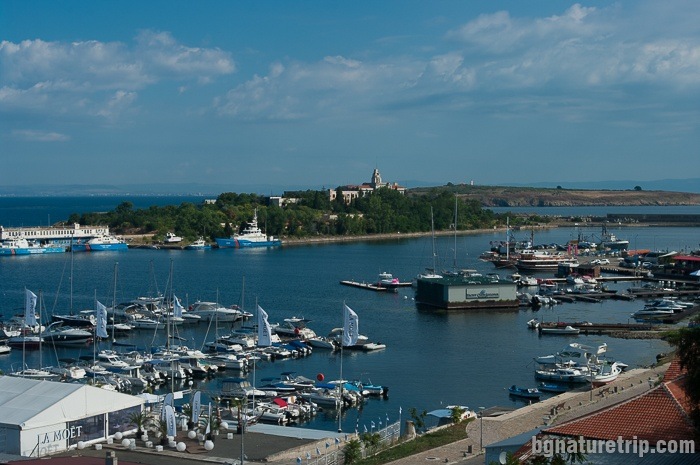
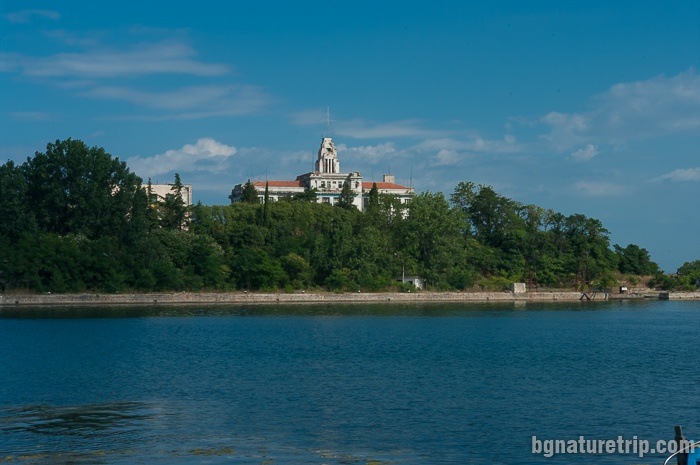
The missing 13 meters statue of Apollo
At the sanctuary, during antiquity, there was a 13-meter bronze statue of Apollo. It was popular in the ancient world, and several ancient authors wrote about it. Among them, there were the Greek geographer Ptolemy and the Roman writer Pliny. The work was done in the 5th century BC by the famous Athenian sculptor Kalamis. However, no matter how many excavations will be madе in the area. Тhe sculpture will never be found. In 72 BC, the Roman subjugator Mark Lucculus conquered Sozopol (at that time Apollonia) and brought it to Rome. There, they place it on Capitol Hill as a military trophy.
During the time of the excavations in the present, archaeologists found an early Christian basilica. It is dating from the 4th century AD. Inside, they found a reliquary with relics. Probably they belonged to the early Christian Roman “Saints Cyricus and Julitta”, that gives the name to the island.
Up-to-date information:
As of July 2018, access to the “Saints Cyricus and Julitta is still prohibited for citizens and tourists, there are a sign and guard. The reason for this is that Border Police ships dock there.
2) St. Ivan Island
It is the largest of the Bulgarian Black Sea islands and was inhabited in ancient times – 7th century BC by the Thracians who had a sanctuary here.
Monastery complex
In the 5th century AD, a medieval monastery complex was built here. Probably it had the name “St. John the Baptist”. In 2010, during the time of excavations, archaeologists found holy remains around the ruins of the monastery. The relics were sent to laboratories in Western Europe for analysis. As a result, an international scientist team concludes the remnants, are highly possible, to be of Saint John the Baptist.
At the moment, they are an object of worship, exhibited in the church “St. St. Cyril and Methodius” in Sozopol.
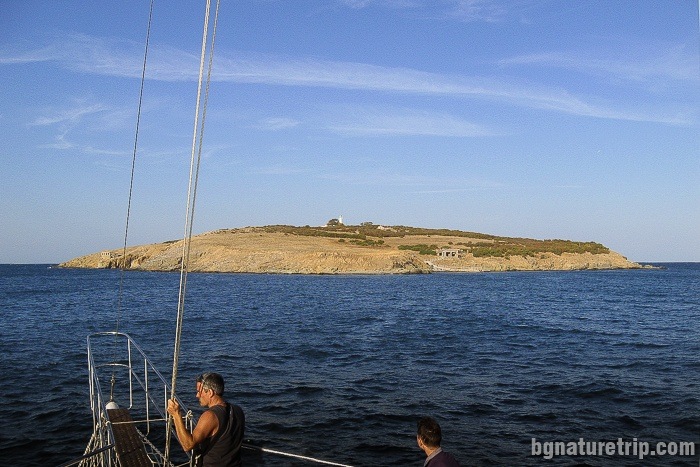
A boat trip to “St. Ivan” island. There is also a lighthouse on the island to help the passing ships.
In the period of X-XV centuries, the monastery complex was in a period of boom – there was a book production here. Highly educated monks translated from Greek to Bulgarian liturgical books, biographies of saints, novels and more.
That activity continued until 1453 when the Ottoman Empire conquered Sozopol, and the monastery was overthrown.
A pirate base
An interesting fact about the island is that at the beginning of the seventeenth century it was a pirate base – Cossacks settled here. Then, they have self-proclaimed the island as their “Pirate Republic” and were looting along the coast of the Ottoman Empire.
Among the ruins of the monastery, there are found many shreds as evidence of their lewd behaviour – glasses, dishes, and artillery bullets. Later, in 1629, Turkish naval artillery banished pirates and destroyed the monastery.
A protected area
Apart from being essential to the history of the area, the island also is a habitat for rare birds. It has been declared a protected area for their preservation. Here is also the only place in Bulgaria where the imported European rabbit (Oryctolagus cuniculus) inhabits. Its population is enormous because there are no natural enemies on the island.
St. Ivan Island is allowed to visit, and a viewing of the remains of the old buildings. There are no regular ships and boats to the island. If you want to visit it, have to gather a group of several people and hire some fishing boat or a yacht. The price for a round trip is negotiable on the site and starts from 30 lv. ( 15 €). Some yachts owners offer additional amenities – fishing, diving, picnic on the island and more.
3) St. Peter Island
St. Peter is one of the smallest on the Bulgarian Black Sea coast and is located very close to the island “St. Ivan”. Probably it was formerly part of the more massive island, but its separation occurred as a result of a natural cataclysm in the nineteenth century. Tourists do not visit it.
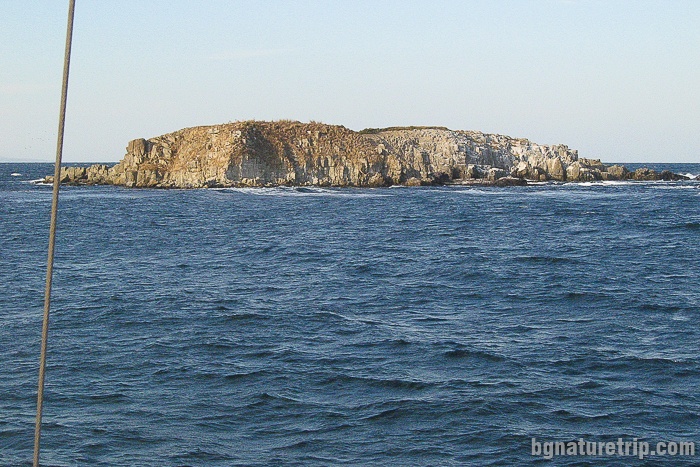
Landmarks in Sozopol
1) The old houses
The old houses in Sozopol have been declared a Historical-Architectural Reserve and give a unique and memorable atmosphere. The number exceeds 180. They are located on the Peninsula of Skamnia and represent the Black Sea Revival architecture of the 18th and 19th centuries.
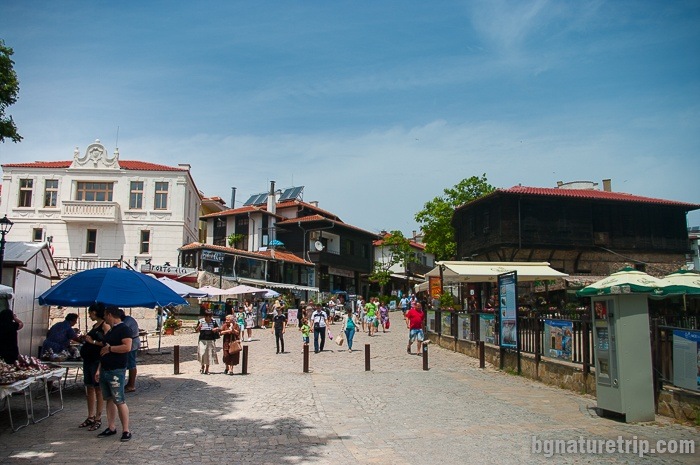
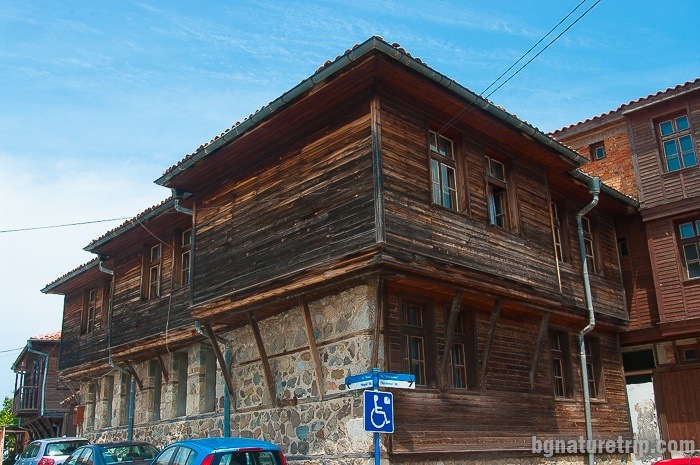
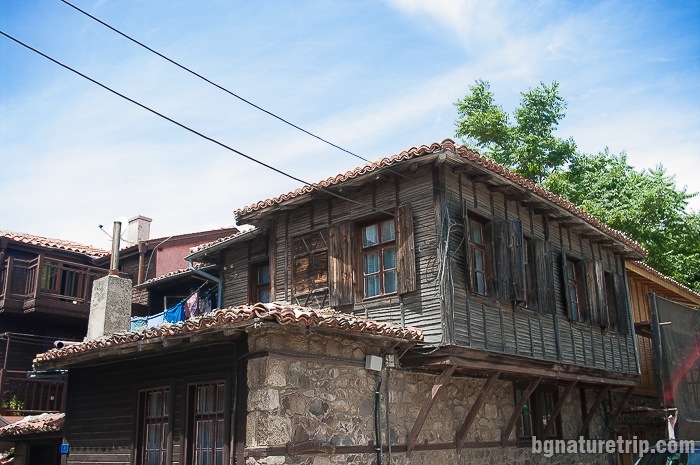
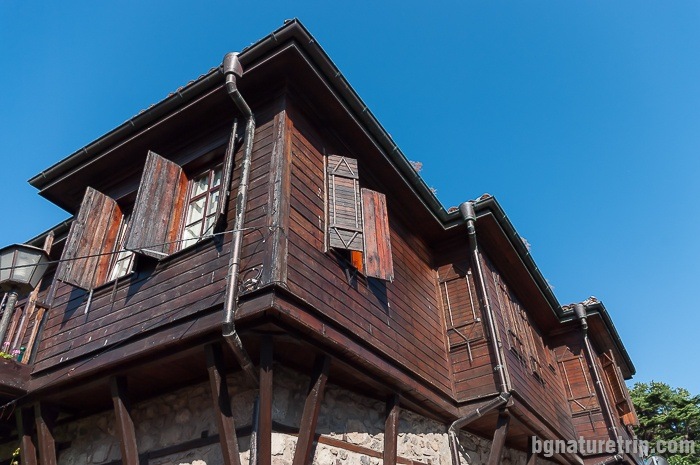

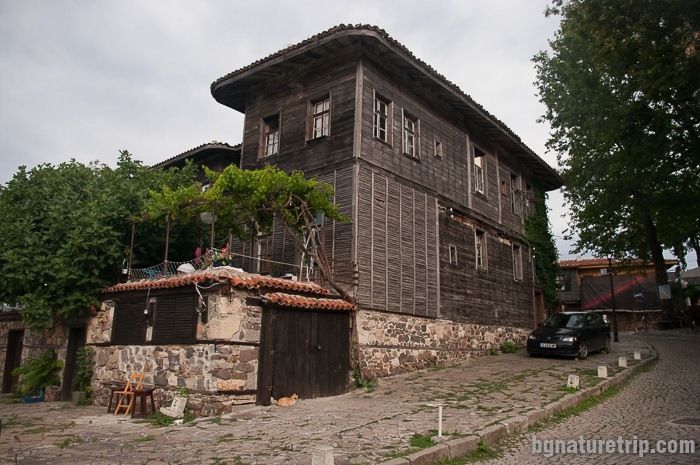
2) The rocks of Cape Skamnia
Many terraced rocks are located at the end of the Cape, giving its name. The word “σκαμνι” (pronounced “Skamni”) is in Greek. It means a chair and probably is related to the vision of the rocks that are like seats because they are flat on the top.
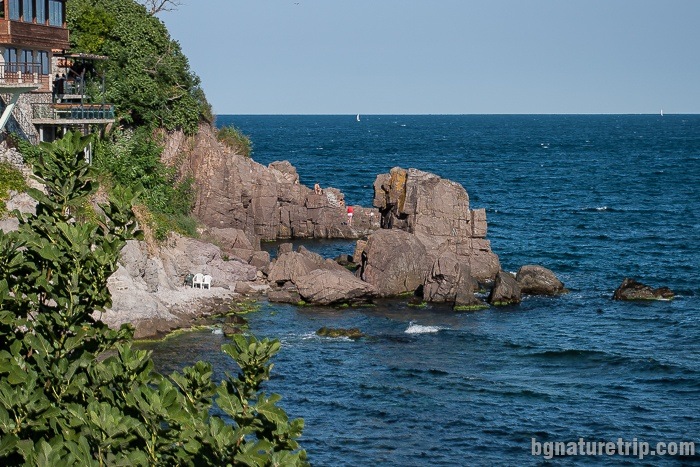

3) The old churches
The church of The Most Holy Mother
The Church of The Most Holy Mother from the 15th century was declared a cultural monument and is active. It is located on one of the cobblestone streets with old houses on the Skamnia Peninsula. It was built on the site of an older medieval temple. Its existence dates back to 1482. That time- the beginning of the Ottoman rule in Bulgaria, the Bulgarian churches had to meet the standard – no higher than a Turk on horseback. Therefore it looks like this – dug into the ground, resembling an ordinary house. Although the church is small, it is beautifully ornate inside and richly decorated.
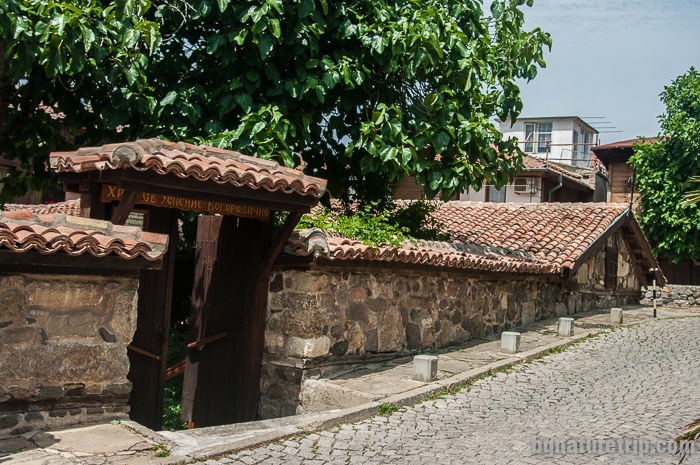
The Church of St. St. Cyril and Methodius
It was built in 1888, but later, in the new history of the city, it was used as a museum. Its location is near the park by the sea. Currently, it is active, and it is an object of worship for tourists from all over the world. The reason for that is the relics kept inside, that belonged to St. John the Baptist.
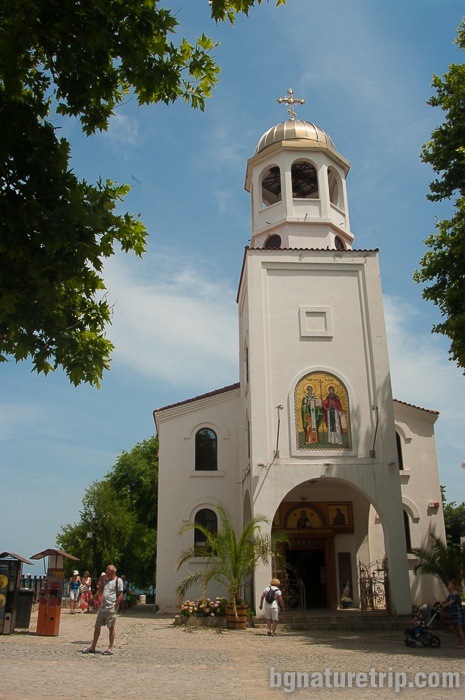
The chapel of “St. Zosimus “
It is located in the park by the sea, built in 1857. On this place, there was an earlier temple before. Historians suggest the Martyr Zosimus lived here in the 1st century AD. Now is considered to be a patron of the city. It is also a common name among the older inhabitants of Sozopol.

Ruins of medieval monasteries and a basilica
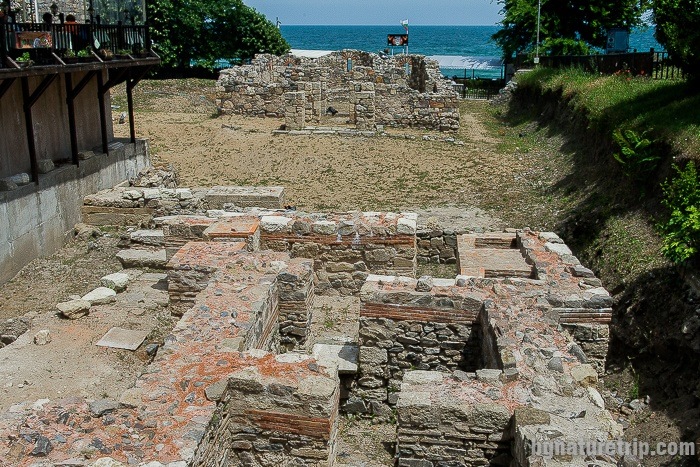
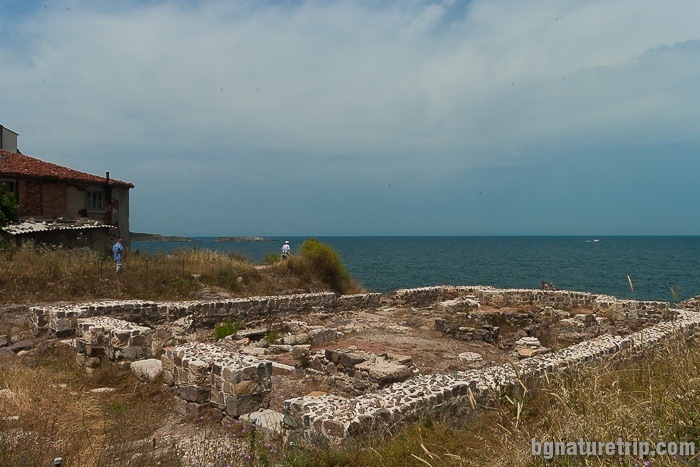
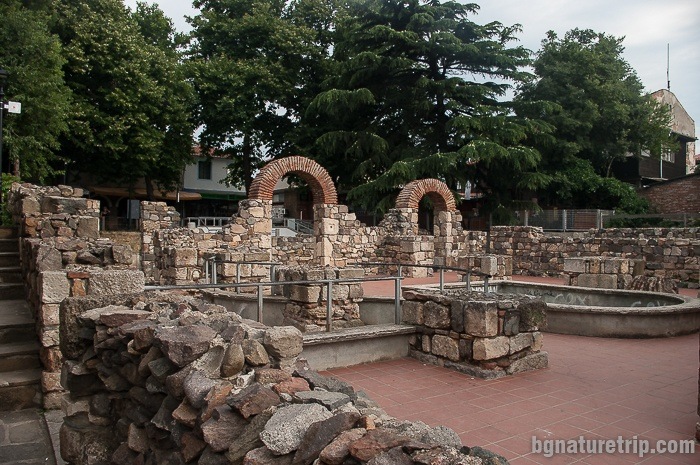
Also, except for described above, there are many small Christian chapels in Sozopol – about 20 in the old part.
The Museum of History and a short history of Sozopol
The History Museum of Sozopol presents the history of the area and its surroundings with finds from prehistory, antiquity, and the Middle Ages. The artefacts exhibited are related to ancient metallurgy, agriculture, shipping, trade, and crafts. There is also a rich collection of over 100 amphorae. Besides the famous Sozopol Vampire is present in the exhibition. It was found during excavations in 2012 and identified as such because of the ritual of his burial.
A prehistoric settlement in the area
In conclusion, based on the findings revealed in underwater surveys, Historians consider that there was originally a prehistoric settlement here in the 5th millennium BC. Its location was in the area between the port and the Island “Saints Cyricus and Julitta,” where was land at that time. Later, as a result of sea-level rise – the settlement sank. According to Herodotus, in the II-I millennium BC, the Thracian tribes of the Skirmians, who had skills in the mining of ores, settled in the area.
Founding in Antiquity
In 620-610 BC, settlers came here from the ancient Greek city of Miletus, located in Asia Minor along the eastern Aegean coast (present-day Turkey). They created a settlement, which they call Apollonia, in deference to the god Apollo, the patron saint of the emigrants. During the first decades of their residence, the colonizers made their living mainly from fishing. The Sozopol water area was affluent in fish – from there passed significant schools of mackerel, Atlantic bonito, garfish, bluefish, and Jack mackerel. Therefore, they salted or dried the fish, which allowed them to transport it over long distances – to Miletus (mother city) and other Greek polises in the Mediterranean. In addition, the area around Apollonia was abundant, in other natural resources – cereals, timber, and metals (the Copper Mines in Strandzha mountain). Initially, the Apollonians did not have access to them.
Economic boom
Subsequently, they established mutually beneficial commercial relations with the ruler of the local Thracians – Skirmians and got permission to expand the territory of the town. The reason for that is the fact the Apollonians had skills in shipping and had contacts with Greek polises. Therefore, they provided transport and found markets for the products of the Thracians.
Unlike them, the Thracians hadn’t ships, trained crews, and skills to navigate the Aegean Sea. Consequently, the new settlers proved to be an excellent partner who helped them to benefit. Also, the Apollonians imported from the Greek polises handicraft stocks and olive oil needed by the Thracians.
Christianity became the official religion in the Roman Empire
Later, in the 4th century AD, when Christianity became the official religion, the town was called Sozopolis. In the translation of greek, that name means “the town of salvation.” There are different versions of the interpretation of the new name. According to some historians, that has the meaning of a new Christian town saved from the devilish Apollo because, in Christian understandings, the pagan god was associated with Satan. Unlike them, others think that the name came from the fact that many ships in distress found salvation here – on the coast of Sozopol.
In addition to the Thracians, Hellenes, and Romans, later Byzantines and Bulgarians also inhabited the city.
Surrounding with fortress walls
During the reign of Byzantine Emperor Anastasius (491-518 AD), the city was surrounded by a solid fortress wall that served for many years further. Parts of it restored can be seen at the central beach and downtown.
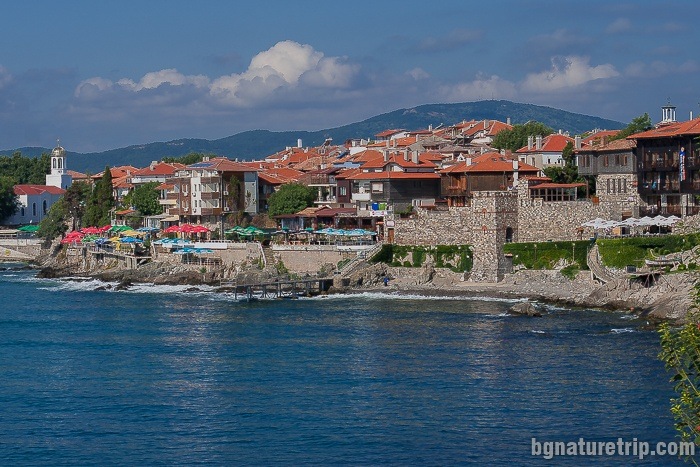
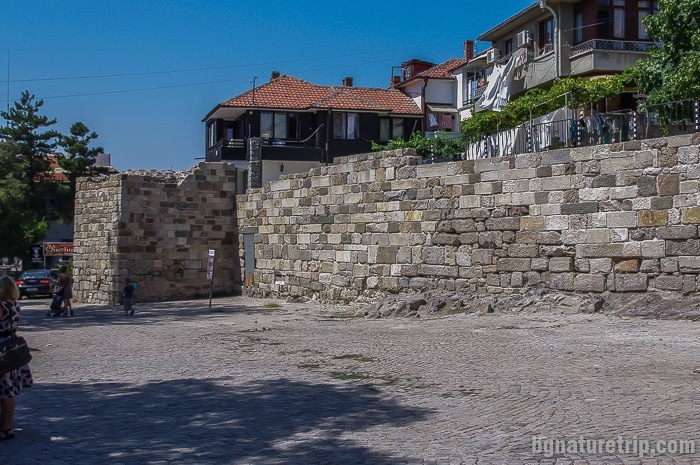
After XX century
Until the beginning of the XX century, the main population of the town was Greek, and mainly Greek was spoken here. Because of tension in the political relations between Bulgaria and Greece in the early XX century, most of the Greeks in Sozopol left and settled in Greece. Similarly, the local Greeks also left in other Black Sea cities – Pomorie, Nessebar, Varna, and others.
The primary industries for today’s Sozopol are tourism, fishing, and fish canning.
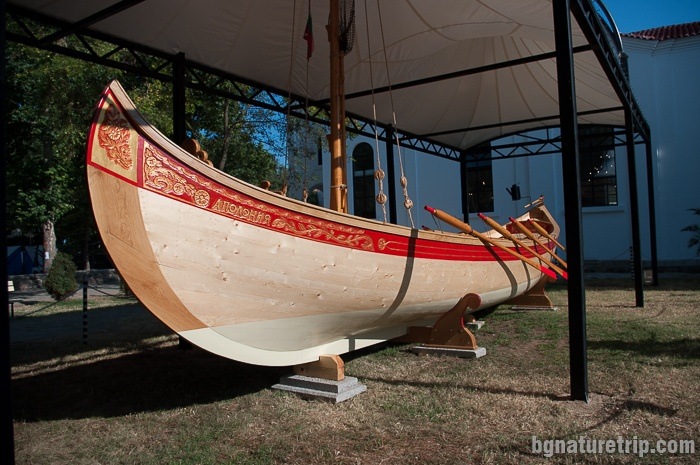

What to see near Sozopol to diversify your vacation on the Bulgarian Black Sea coast:
If you plan to stay for longer in the Sozopol area, good ideas for a short trip are to visit:
- The fjord at Cape Agalina (10 km to the south)
- The “Chauffeurs’ Beach” of Alepu dunes, south of Cape Agalina
- Bakarlaka, from which a panorama from above to Sozopol and the islands is observed (16 km to the west passing through Ravadinovo village)
- Arкutino Beach (13 km south). Immediately next to it is the Arkutino Swamp, where you can see white water lilies. In addition, from the beach begins hiking trail leading to the mouth of the Ropotamo River
- Boat trip along Ropotamo River (16 km)
- Primorsko (23 km) for more beautiful beaches and a museum with finds discovered in its surroundings
- Begliktash Thracian Sanctuary (26 km) near the city of Primorsko. One of the most visited historical sites in the country
- Ropotamo Reserve (27 km) near the town of Primorsko, where there are many hiking trails through beautiful nature and historical landmarks.
USEFUL: To get a quick and easy idea of where these places are – see the destinations marked on our Google map. There all the landmarks we’ve written about, are marked as tags with links.
Also, to plan your trip to them, you can use the selection of assistive tools: Google Road Map with calculator in km, flights to Bulgaria, rental cars, weather forecast, hotel search, timetables of buses in the region.
Offers for hotels in Sozopol
Booking.com